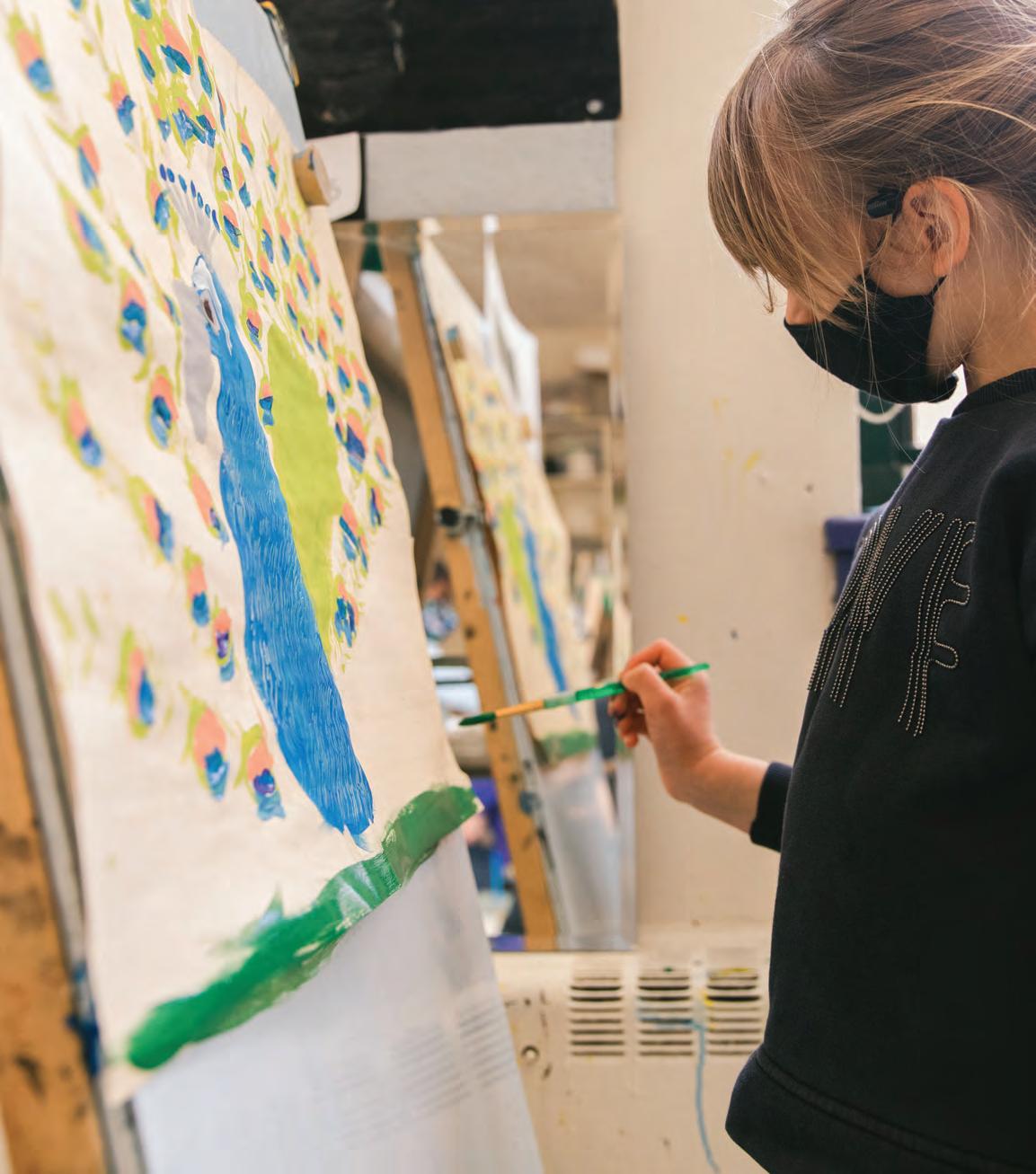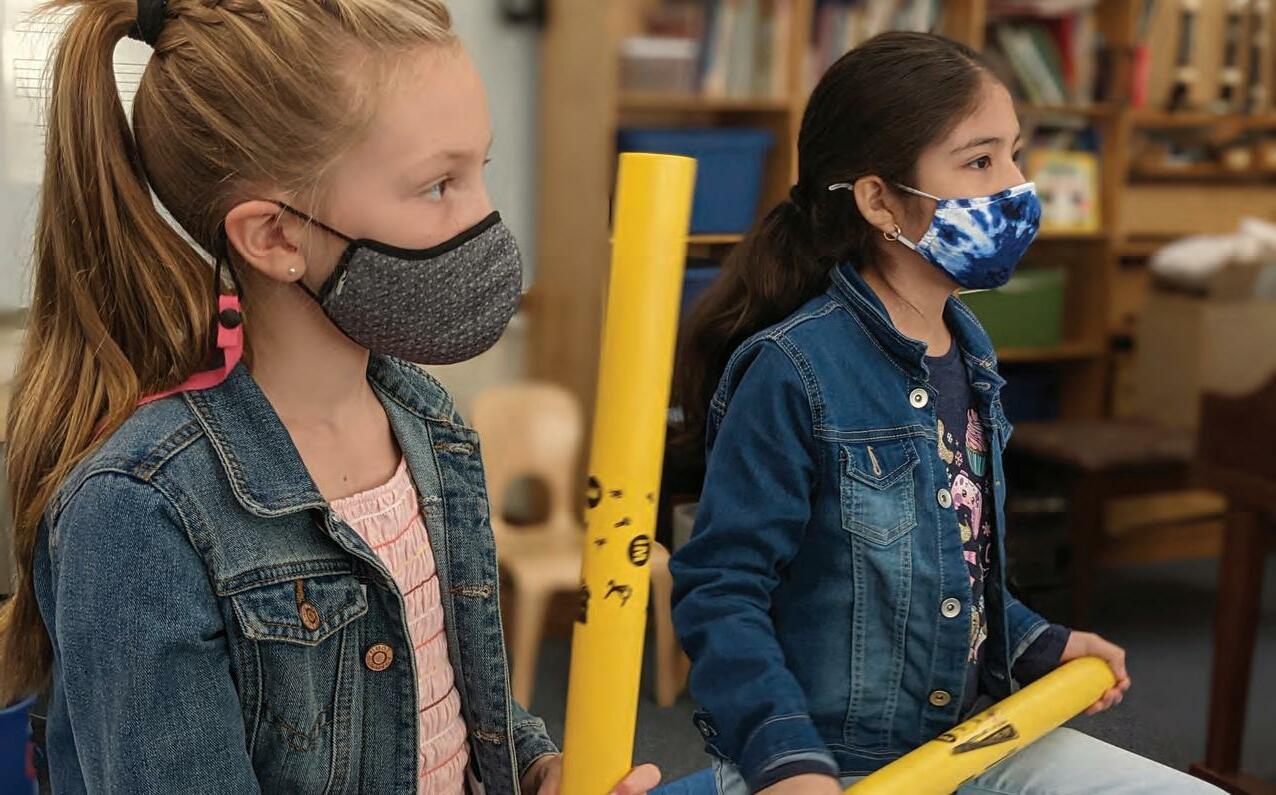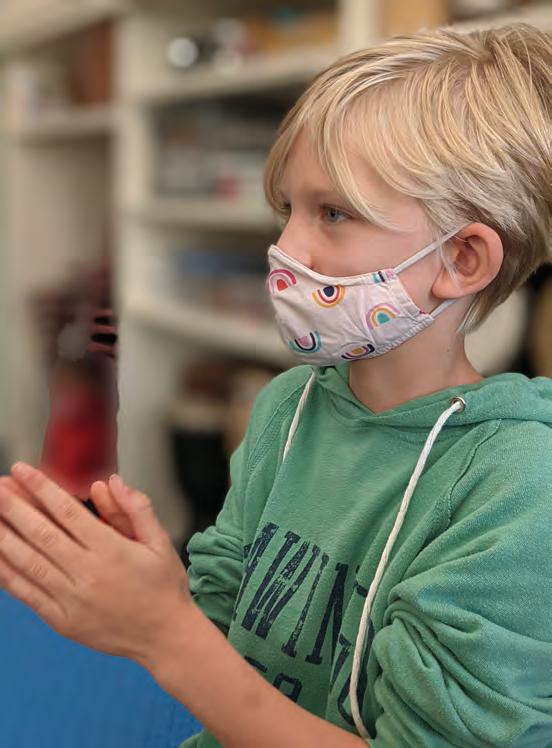
5 minute read
Homework
The purpose of homework in the Lower School is to nurture literacy skills and build a strong foundation for independent work on the part of the student. Homework is practiced first in school during the first weeks. Then it is sent home and expected to be completed independently. In general, homework is given Monday through Thursday, and not on the weekends. All students should be read to daily, preferably by a parent, as this is the best way to nurture a love for reading and develop a broader vocabulary.
Reading is the daily homework expectation, with varying expectations at their grade levels. There may be occasional math or writing assignments to offer some extra practice or challenge.
Advertisement
FIRST GRADE
In first grade students, as they learn to read words, shift from a parent reading to them, to them reading to a parent. Students should build up to 10 minutes of daily reading at home.
SECOND GRADE
In second grade students are expected to read on their own. They should build up to fifteen minutes of sustained reading. Parents should continue to read aloud to them so they further develop their listening comprehension and vocabulary.
THIRD GRADE
In third grade students continue with reading, building up to 20 minutes a day. Parents should continue to read aloud to them so they further develop their listening comprehension and vocabulary.
If homework for any student seems to be taking longer than the given amount of time on a regular basis, please inform the teacher so an adjustment can be made.

As one of the four pillars of MSS, the arts are intentionally taught as they are essential to thriving in life. The arts are the language of the soul, conveying meaning and bringing beauty into students’ lives and the learning community.


Shared Space
The Shared Space is a sensory and maker space for students. Students receive art instruction in real art and their materials: clay and wire, textiles, collage and paper construction, drawing and paint. As they learn how to work with different media they use it to represent their research and understanding of the themes they are studying in the classroom. Drama provides other ways for students to enact what they learn and conduct investigations. Representing concepts in different media builds a deeper understanding.
Music

Every game and song leads students to become true musicians who can read, write, and enjoy music in every way!
Students, like all mathematicians, learn how to articulate their problem-solving strategies with their class. This expands the thinking each student is exposed to as a variety of strategies are presented, and it gives teachers insight as to how the child understands mathematical concepts.
Mustard Seed School has an arts-centered curriculum where music is a daily activity. The program is based on the Kodály philosophy and focuses on the goals of musical literacy, as well as singing a wide variety of music that is authentic in nature. Students have music twice a week and in second and third grade, it extends to three times a week as students become Songsters. The music program at Mustard Seed is a vibrant and ever-evolving entity.
In music class, students will learn musical concepts and skills by:
DOING Creating, Performing, and Participating in the Arts Students will create and participate in various roles in the arts. KNOWING Knowing and Using Arts Resources and Materials Students will be knowledgeable about and make use of materials and resources available for participation in music.
LISTENING Responding to and Analysing Works of Art Students will respond critically to a variety of works in the arts, connecting the individual work and to other aspects of human endeavour and thought.
UNDERSTANDING Understanding the Cultural Dimensions and Contributions of the Arts Students will develop an understanding of the personal and cultural forces that shape artistic communication and how the arts shape diverse cultures.
FIRST GRADE
Students start the year by practicing the correct use of voice and body to express music. Students practice many musical concepts through singing games, circle dances, and improvisational activities. Students will also start learning about musical literacy, preparing, practicing, and mastering reading, writing, performing, and
composing music using quarter notes, eighth notes, and rests. Students also start using simple classroom instruments to supplement literacy practice and performance skills. They share their learning with audience members at the annual Spring Concert.
SECOND GRADE
Students continue using singing games, circle dances, and improvisational activities to further their musical skills. Students also start using more and more instruments, both pitched and unpitched, to further enhance their musical studies. This year they master the on-the-beat rhythmic patterns such as a quarter note, two eighth notes, quarter rests, and start working on extending the sound over multiple beats (half notes and whole notes), as well as subdividing the beat into smaller units (sixteen notes). Melodically, they learn and practice phrases using the pentatonic scale. The students start analyzing pieces of music and create strategies for learning them. The second-grade students are also part of the Mustard Seed School Songsters, a choral ensemble for students in Grades 2 and 3. They rehearse once a week and learn about how to become a community of singers as well as using their voices to lead. They share their learning with audience members at the annual Spring Concert.
THIRD GRADE
Students start the year by reviewing all the literacy concepts from previous years to prepare for the new year. They use singing games, circle dances, simple choreographed dances to reinforce the skills, and build community. Throughout this year, the students are exposed to extended pentatonic, both major and minor scales, even rhythmic patterns, and uneven rhythmic patterns such as syncopations and dotted rhythms. They use larger instruments such as congas, djembes, tubanos, as well as bucket drums, Orff instruments and boom whackers to support their learnings. In Songsters, they are the leaders of the ensemble—they sing extra verses in multi-versed songs, learn and perform both descants and lower harmonies to enrich the songs, and start learning conducting patterns. They share their learning with audience members at the annual Spring Concert.










